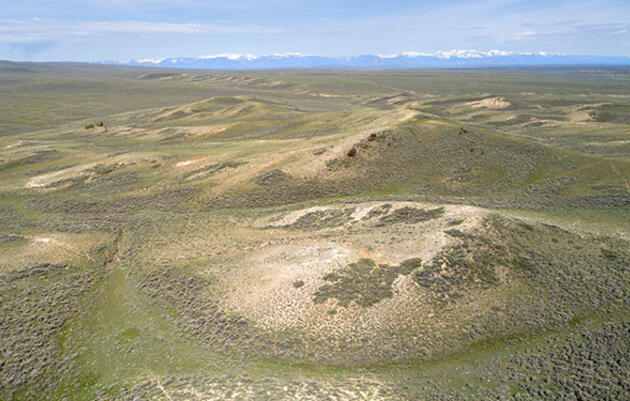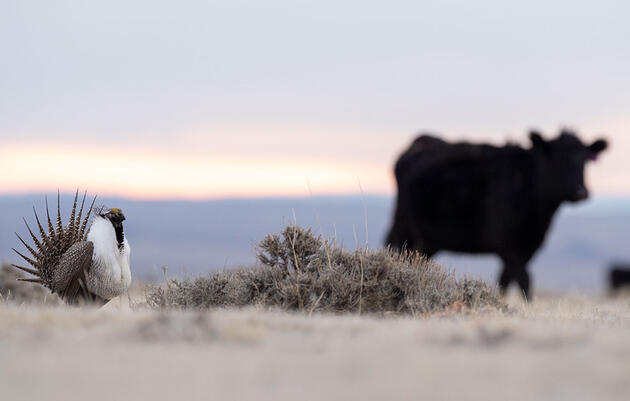A small group of Bighorn Audubon Society members were out at Kerns Wildlife Habitat Management Area on a clear spring day. As we walked up the hill, a blackish bird who looked like he was wearing a tuxedo with wings outstretched in mid-air, was anxiously singing. It was a Bobolink, one of the world's most impressive songbirds who travels some 12,500 miles to and from southern South America each year to return to Kerns to breed. With its long and trilling song, it has become a signature sound of our grasslands. As we continued our walk, the lupine, blanket flower, and other forbs held on to other grassland birds, which are harbingers of the prairies of North America.
The Amsden and Kerns Wildlife Habitat Management Areas in the Sheridan region recently received recognition from Audubon Rockies as Wyoming’s newest Important Bird Areas (IBA). The effort to get the areas designated as IBAs was led by the local Bighorn Chapter of the Audubon Society and Game and Fish Sheridan Region personnel. In the United States, IBAs are designated by the American Bird Conservancy and the National Audubon Society as part of a global conservation effort that focuses attention on key bird species and their habitats. The concept is simple: identify and compile an inventory of areas that sustain healthy populations of birds and add a layer of protection for those habitats.
"We are very excited to add both these areas into our IBA program,” said Dr. Jackie Canterbury, president of Bighorn Audubon Society. “The first thing Audubon asks is: 'why is this site important for birds?' In the case of Amsden and Kerns, it is simple - both of these areas sustain healthy populations of birds and contain important habitats such as native grassland, forest, shrub stands of native chokecherry and serviceberry, and riparian areas in the form of small streams and the larger Tongue and Little Horn Rivers. The other significance of these lands is their location along the Bighorn mountain foothills, a region that is most often in private ownership. All these elements provide a unique opportunity to protect the birds of our region, particularly grassland and shrubland birds which are both experiencing dramatic declines.”
The designation process involved documenting the areas as providing important nesting, brood rearing and foraging areas for native bird species as well as on-site visits by Audubon representatives. The relationship of Bighorn Audubon to this area is unique because in the early 1980s, long-time Audubon member Jean Daly completed a wildlife inventory on both management areas and documented over 80 species of birds.
“The Kerns and Amsden Creek celebrate their 70th and 75th anniversaries, respectively, in 2019,” said Sheridan Region Public Information Specialist Christina Schmidt. “While these areas were originally purchased for and are still managed first and foremost for elk winter range, dozens of other wildlife species benefit from the management and conservation of these areas. As a region, we were interested in pursuing IBA designations for these units to show their value not only for elk and other big game species, but a variety of wildlife.”
Other areas designated as IBAs inspired by Bighorn Audubon include: The Brinton IBA (620 acres), Ucross IBA (20,000 acres), Valley View subdivision IBA (266 acres), Falxa Land Company IBA (41,000 acres), Kleenburn Recreation Area IBA (77 acres), and now Amsden Wildlife Management Area (4,000 acres), and Kerns Wildlife Management Area (5,000 acres). Game and Fish’s Soda Lake, South Park and Yellowtail WHMAs also have an IBA designation.







